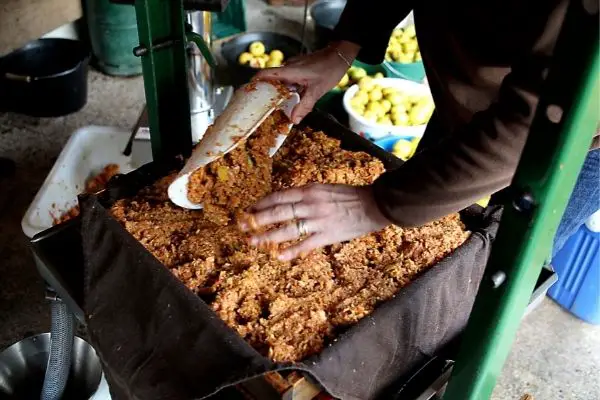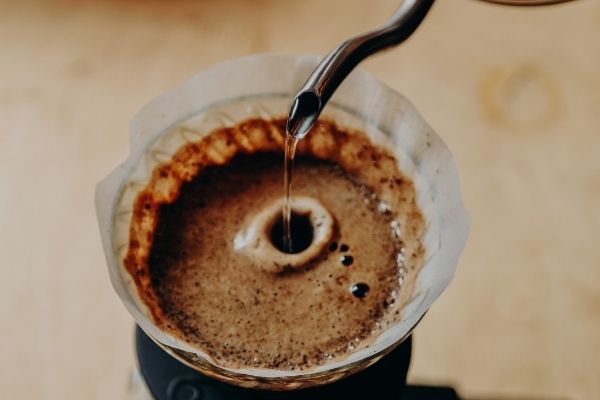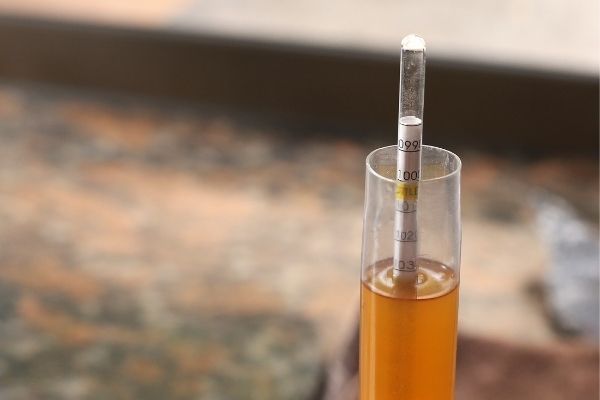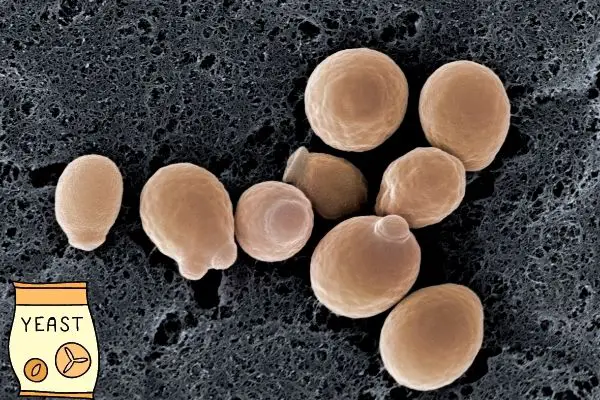Hard ciders, like other alcoholic beverages, comes in a variety of flavour pallets, and while some people love their ciders “bitter”, others would rather be without be without these somewhat hostile taste nuances.
Most of the bitter tastes in cider comes from the alcohol and phenols – most of which are tannins.
The tannic quality of cider is mostly considered a good thing by cider drinkers and the traditions of cider makers in north-west France and south-west England often include a good chunk of bittersweet apples for this very reason.
If you are new to cider, or you have used a very sweet or tannic juice as starting material for your cider, it will become bitter in the end and that is not always desirable.
If your finished cider is too bitter, adding a sweetener is the fastest way to reduce the bitter taste.
Bitterness also tends to reduce with time, so storing the bottled cider for a year or two usually only improves on the taste.
Other options to correct bitterness depends on what compounds causes the taste – which we will look into below!

However, the best way to avoid bitterness in cider is always to have this goal in mind from the beginning of the process. In this way you can choose the right apples and fermentation conditions to avoid those compounds if you do not like your cider to be bitter.
Where does the bitterness of cider come from?
Bitter tastes are often warning signs that something is poisonous. Our bodies have evolved to associate certain bitter tastes with danger, and so we tend to avoid them.
This can cause some repulsion, especially to first time cider or beer drinkers, when they drink beverages that are naturally bitter, like coffee, beer, or certain ciders.
First, we do need to define the taste “bitter”, because many people mix tastes up and if you cannot define the problem, it is very hard to solve!
Most people would agree that the taste “bitter” as pungent and sharp in a way that is disfavoured by most people if experienced in isolation.
This definition, however, is not as close as we would like to get for the purpose of analyzing beverages like ciders, wines and beers (coffee and hot chocolate for that matter!).

True bitterness is provoked by direct stimulation of the “bitterness” receptors in the mouth.
Some of the tastes of pure bitterness include that of lemon peel, tonic water, raw cocoa powder, kale, dandelion or an over extracted coffee.
In cider, this taste can stem from certain phenols, including tannins, but also the alcohol itself!
What starts like a sweet and sour juice will eventually turn bitter as alcohol content rises and sugar levels drop to unmask the more complex bitter tastes of the cider.
Astringency is another, somewhat misunderstood taste in ciders and other fruit wines. It is closely related to bitterness and tartness but is more of a mouthfeel than an actual taste.
True astringent tastes can be recognized from strong black tea or dark red wines, the taste of chewing a grape seed, and the raw taste of aspirin.
In ciders and wines, astringent tastes are caused predominantly by tannins and tannic dicers are generally richer and fuller-bodied than non-tannic ciders.

Tannins also have chemically beneficial effects on cider by acting as natural antioxidants that prevent off-tastes and color stability.
The types of apples used and how they are treated before fermentation largely determine the tannin content of cider.
For example, including a resting step (called maceration) of the ground apples before pressing the juice often leads to more tannins getting extracted from the apple peel.
The third taste that people sometimes refer to as bitter is the sharp dry acidity or “tart” taste of cider apples.
In cider, this taste comes mostly from the malic acid present in the apples.

While this taste is often regarded as a good quality in cider apples, the dryness comes close to that of astringency or strong alcoholic drinks, and may be regarded as bitter or unfavorable for some.
However, if you do not pasteurize or add sulphites to your cider, there is a high chance that the tart malic acids will be converted by lactic acid bacteria into lactic acids that have less tartness to them.
This is, along with the lower alcohol percentage, why “naturally” or “wild” fermented ciders are often less bitter/sharp than those fermented with sulfites and commercial yeasts!
How do you make cider less bitter?
Personally, I do prefer my cider with a good portion of tannins and astringency. I like the depth that it gives to the final aged cider.
However, I do not like too strong ciders in terms of alcohol percentage, especially if not balanced out with acid or sweetness.
Balancing out the bitterness is, in my opinion, the best way of making a cider, or any wine for that matter, less bitter.
Have you ever had a bitter cup of coffee? One that has been extracted too much or from old or too darkly roasted beans? How can you deal with that?

Try adding sugar or milk. It is surprising how little sugar it takes to save a bad cup of coffee. It also works if it is too sour.
The same is the case for too sour or too bitter ciders. You can make it sweeter and sometimes more acidity helps as well.
However, one challenge we face in cider brewing (all fermentation actually) is that we cannot just add sugar, as this will be used to produce alcohol by the yeast – making it even more bitter!
This leads us with only a few options to obtain the sweetness that we want.
How do you reduce the tartness in cider?
Tartness is a combination of acidity and bitterness present as a core taste in ciders from many parts of the world, especially Spanish and French ciders.
Tartness is therefore often considered as a positive taste to some degree in a cider, but it can also get too much. If too present, the tartness will overwhelm the other tastes of the cider, which can ruin the flavor balance.
The tartness comes from the apples used, but its presence is ultimately dependent on all the other flavor compounds in the final fermented cider.
The tartness of your cider will be reduced if you manage to increase the sweetness or reduce the acidity of your brew.
This can be done by encouraging malolactic fermentation (converting the relatively tart malic acid into the softer lactic acid) or you can simply back-sweeten the cider as I describe in the next section.
If your cider ferments to a point of high alcohol and low sugar using commercial yeast, it will be perceived as more tart than a sweeter, naturally fermented cider.
So lets take a look at what you can do to sweeten your cider!
How do you sweeten homemade cider?
Well, you can always add extra sugar or sweeteners to the cider before the fermentation starts. This will either yield a higher alcohol percentage or a sweeter end product.
Most commercial yeasts are fairly alcohol tolerant (some up to 20%!) and therefore, your cider will end up dry or sweet with a lot of alcohol if you add a lot of extra sugar.

When people refer to the sweetening of cider, they often think of the final product after the (primary) fermentation has ended. So let’s look at our options here.
Can you sweeten cider after fermentation?
Yes, this is where most cider makers sweeten their brew.
There are fundamentally two ways to sweeten or backsweeten your cider after fermentation has ended:
- Remove or inactivate the yeast and add sugar.
- Add something sweet that does not ferment.
The inactivation of yeast can be done by adding chemicals or shocking the yeast via the art of cold crashing.
In addition, if you plan on making a sweet cider from the beginning you can simply use a less alcohol-tolerant yeast and a bit of luck…
Or, finally, the simplest but slightly less elegant option is to add sugar or apple juice just before drinking.
Inactivation or removal of yeast from cider
The first method is primarily used by industrial cider producers, because it can be somewhat technically difficult to inactive or remove yeast from the cider at home.
To remove the yeast completely, one needs a fine filter and a pump to circulate the cider with high pressure in a sterile setting. This is usually a bit too much work for simple home brewers like you and me.
Therefore, inactivation of the yeast is somewhat more achievable.
Industrially, this is sometimes done via micro pasteurization where the cider is heated to above 70°C (158°F) for less than a minute to kill off the yeast without ruining the taste or evaporating the alcohol of the cider.
You can in principle do this at home by adding sugar just before bottling and then heating the freshly bottled cider bottles to around 70°C (158°F) in a water bath (or a dishwasher!) for about 5 minutes. Be careful though as the bottles may break!

A more accessible way for home brewers, is to inactivate the yeast with chemicals such as potassium sorbate, sometimes combined with sulphites and a cold shock, to inactivate the yeast, after which sugar in any form can be added to sweeten the finished cider.
While these methods can work, there is always the risk that some yeast will survive and start producing CO2, which in the best case removes the sugar again, and in the worst case makes the bottles explode…
However, more often it will work fine but you will have to figure out other ways of adding carbonation to your cider as the yeast will not perform the task for you!
Another option is to simply drink the cider as a non-carbonated “still” cider, which is historically the most common way of drinking cider…
Addition of unfermentable sweeteners
For amateur cider makers, the second listed method is often the best. Even though active yeast will eat all fermentable sugars, we can still add sugars that taste sweet but are not accessible to the yeast.
Sugars inaccessible to yeasts are often present at fairly high levels in grains and therefore beer is usually left with some residual sugars that are not fermented.

This is the reason why beer is naturally quite sweet compared to most wines or ciders where almost all sugars are fermented.
The amount of unfermented sweeteners naturally present in cider does vary depending on the apples used, but especially pears contain a fairly large amount of sugar alcohols. Mostly sorbitol.
Sugar alcohols like sorbitol or xylitol, along with artificial or more natural sweeteners like aspartame, stevia, or even lactose can be used to sweeten cider after end fermentation without revoking the yeast.
This is clearly the easiest and safest way of sweetening cider and reducing or balancing out tastes of bitterness.
Use wild yeast to obtain sweeter cider
One of my preferred ways of obtaining sweet, less bitter, and more smooth ciders is to do wild fermentations.
This method relies on the yeasts already present on the apples and if you are lucky, you get a population of yeasts that will not tolerate high alcohol levels and therefore leave a bit of residual sugar for you to enjoy!
In a way, it is the easiest method as it requires you to add nothing and do nothing to the juice other than leaving it at the right conditions with an airlock to prevent oxygen from reaching the juice.
The downside of the method is that it does not always work. Sometimes yeasts with a higher alcohol tolerance are present and they will ferment the cider dry.

Other times, if you bottle too late, the yeast will die and you will get a still cider instead of a sparkling one.
In my experience, waiting a few weeks after the fermentation has stopped and then racking and placing the cider in a cold place below 10°C (50°F) for a few months basically inactivates most of the yeast and gives you a sweet, less bitter, cider. This process is also known as cold crashing.
Sometimes, there is surviving yeast left to allow carbonation upon the addition of sugar before bottling, but this is not always the case.
For some wild yeasts, the pressure developed after bottling is actually enough to kill the yeast when combined with cold storage, and this will give you the perfect match between sweetness and carbonation!
Sweeten just before drinking
This one is fairly obvious, but still not appreciated by many.
The thing is, if you want a sweet cider without any risk of bottles exploding or adding chemicals, why not just add the sugar directly to the glass right before drinking the cider?
It might sound blasphemic, but it actually makes sense in many ways. First, there might be many people drinking the same cider, with different preferences.
By adding sugar post second-fermentation, you can adjust the sweetness exactly to everyone’s needs.
Maybe I like my cider bitter and tannic, and you like it less bitter or bitter-sweet – just add half a teaspoon to a large glass of cider and you will get rid of some bitterness!
Another good thing is that you can maximally ruin one glass at a time, and a whole bottle will give you several attempts to experiment with your preferred sweetness.
See the video below for more discussion on these topics:
Conclusion
To sum up, bitterness in cider can show in many forms and mainly stems from the alcohol itself, phenolic compounds like tannins, and sometimes the dry malic acids also contribute to some peoples idea of bitterness.
Luckily, there are numerous ways to avoid too bitter a cider, which is mostly achieved by increasing its sweetness using various strategies including yeast inactivation, wild yeasts or the addition of (artificial) sweeteners.
Another crucial part of adjusting bitterness lies in the choice of apples, which I have covered elsewhere on this blog!




